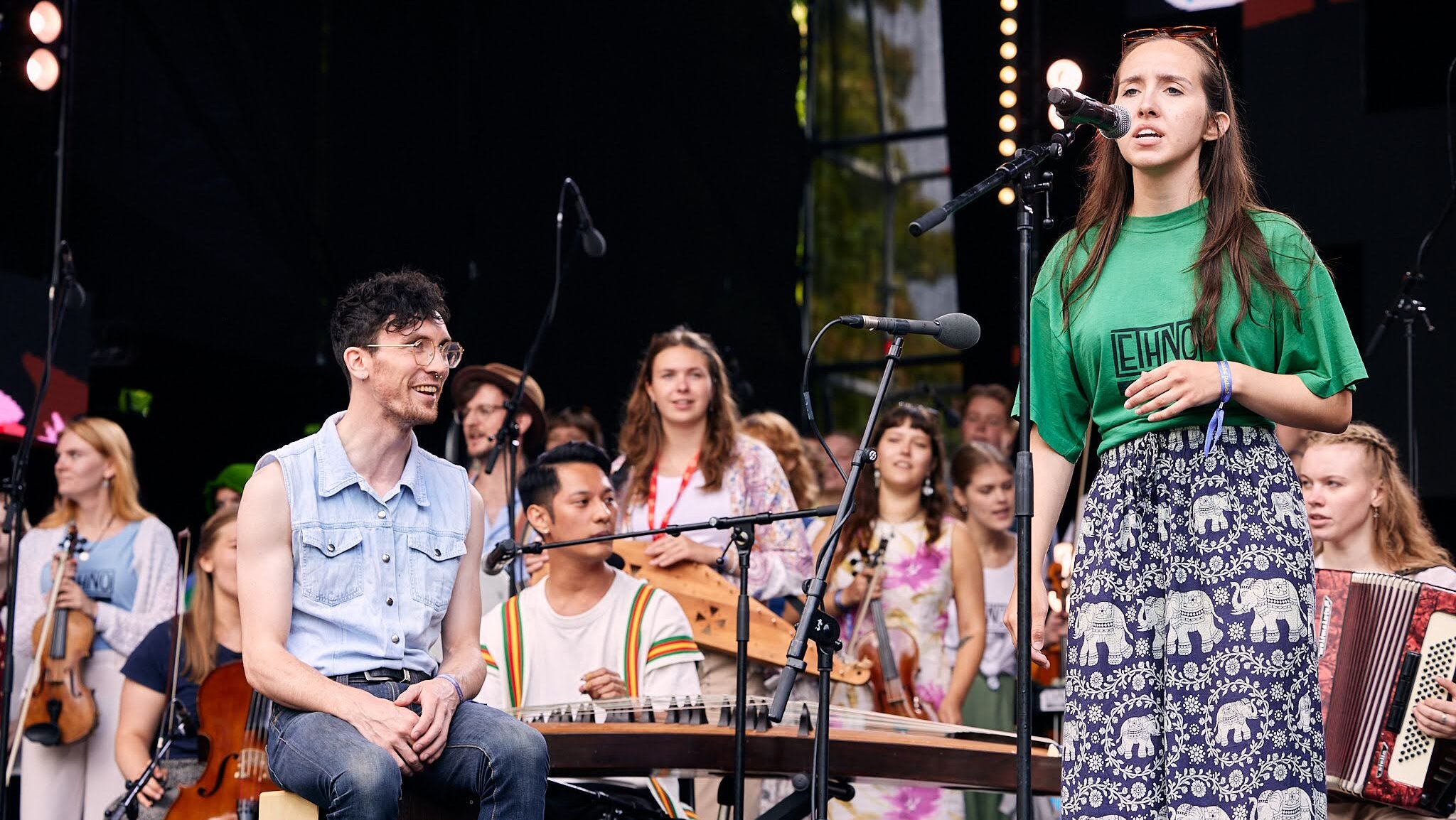The event also acknowledges Finnish Independence Day on December 6th.
The live-stream will encompass lectures, talks, and comments from the University's Professor of Finnish Studies, Anu Muhonen, and Chief Archivist of the Estonian Museum Canada/VEMU, Piret Noorhani. Noorhani is also Festival Director for Estonian Music Week.
Following this, there will be a musical performance from the duo Honeypaw, whose sound is steeped in traditional Lithuanian and Finnish musical and literary motifs. Honeypaw's members are Jurgita Žvinklytė, from Lithuania, and Matti Palonen, who is of Finnish heritage. Žvinklytė and Palonen met in March 2019, but it was the start of the first lockdown in 2020 when “back-burner stuff became front-burner stuff” as Palonen explains.
There is an undeniably immense amount of research that is put into Honeypaw's music, and the band's grant support from the Lithuanian government has allowed them to research these traditions. Integral to Honeypaw's music are Lithuanian sutartinė songs. For those unfamiliar with the sutartinė, Žvinklytė describes them in terms of multiple rhythms and melodies of the same length overlapping. In fact, in some sutartinė, one melody may be countered with the same melody “flipped upside down.” This concept of heterophony, which Palonen studied in Finland, is almost like weaving. When the band plays with the Finnish jouhikko (lyre), they may be tuned in such a way that two different keys are played simultaneously, even contrasting major and minor. “It's about making harmony out of polarizing things” says Palonen.
These are sounds that, according to Žvinklytė, might be considered unusual. “It's a sound that's not so recognizable here in Canada.”
The duo's music also draws from Palonen's study of the Kalevala runos at U of T with Professor Muhonen, and the Finnish language course. Palonen remarks that one influential part of his studies was seeing how all of the cultures across Finland and the Baltic region are connected and how “what we've come to think of as the quintessential Finnish epic has been influenced by other cultures.”
Cross-cultural partnership goes back much further than the formation of Honeypaw. Palonen says “we've noticed in the folklore across the Finnic and Baltic Region that there's a lot of similar imagery and symbolism. For example, birch trees and the cuckoo bird. It's seen as a sacred bird that can tell fortunes.”
A respect for nature is intrinsic to their music. The band's name, “Honeypaw”, itself connects to the traditional belief that, with bears being revered creatures, it was bad luck to say the word “bear.” Saying the word could cause a bear to enter your village and cause destruction. Palonen says “In the Kalevala, they might refer to [a bear] by its brown fur or with the word ‘honeypaw.'” It's interesting to note the similarities between the languages of Finland and Estonia, where “honeypaw” would translate to “mesikämmen” in Finnish and “mesikäpp” in Estonian. Likewise, “bear” is translated as “karhu” in Finnish and “karu” in Estonian.
Furthermore, many sutartinė involve stories of trees or animals and connect them to human life. Singers of sutartinė have often been well-versed in natural and spiritual knowledge. Palonen adds “Certainly in Finland, shamans were also singers and kantele players. There are all kinds of interesting tidbits, so that's why we work to mix the two cultures together.”
Regarding Žvinklytė and Palonen's use of archival materials, Palonen notes “It's given us permission to think of ourselves as folk musicians in the living tradition. We didn't learn the songs from our grandparents like the traditional way. We learned from the archives and all of the people who were folk musicians over the years.” Some recordings that the duo have worked with in preparation for this concert were even recorded in Tallinn, Estonia.
Where does this music fit among contemporary music? Palonen has played for several years as a TTC musician, through which he was asked to interpret Beyoncé and Drake on the Finnish kantele (or kanklės in Lithuanian), the zither that he plays and makes as a luthier, for a marriage proposal. But moreover, these two musicians are open to the global and contemporary musical elements that a city like Toronto has to offer. Palonen says, “The sutartinė [are] mathematically structured, so you get some really interesting rhythms. Then when you take that to a modern audience, you can say ‘this song kind of lends itself to having some kind of reggae bass line or groovy element.' So we're definitely influenced by stuff that's going on in Toronto.”
There is remarkable physicality in their music, too. Over the last summer on Manitoulin Island, the duo made several videos of songs performed on “treeharps” that they created, which are made up of strings and the resonant trunks of dead trees.
Žvinklytė is a multidisciplinary artist and an alumnus of Vilnius Academy of Fine Arts. She is behind the videography of Honeypaw. Palonen continues to build kanteles. They both vouch for the idea that in the arts, everything is connected, and so they work together fluidly to create these videos. The result is something that is genuine and has already started to go viral online.
Be sure to watch the concert and lectures online; and also keep an eye on Honeypaw's website and Facebook page for the duo's latest developments.
This article was written by Vincent Teetsov as part of the Local Journalism Initiative.




